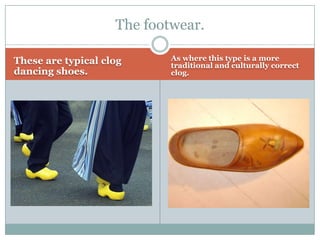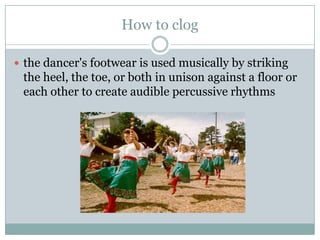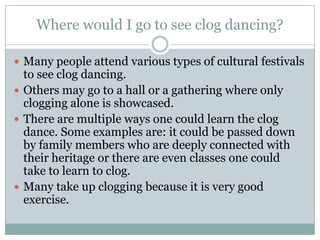The clog dance
- 1. By Spencer CobournThe clog dance
- 2. These are typical clog dancing shoes.As where this type is a more traditional and culturally correct clog.The footwear.
- 3. How to clogthe dancer's footwear is used musically by striking the heel, the toe, or both in unison against a floor or each other to create audible percussive rhythms
- 4. When and where did it originate? Clogging is a type of folkdance that is a part of traditional European dancing, and it is also an early African-American dance. There is not a certain location from which this dance originated, because there are so many different types. Although many people think it is simply Dutch. It is known that it is as old as the early 1400ĄŊs.
- 5. The clog dance is unique because it is performed wearing traditional wooden shoes. Many types of dance do require a special type of shoe such as tap or ballet.What makes it unique?
- 7. Where would I go to see clog dancing?Many people attend various types of cultural festivals to see clog dancing. Others may go to a hall or a gathering where only clogging alone is showcased.There are multiple ways one could learn the clog dance. Some examples are: it could be passed down by family members who are deeply connected with their heritage or there are even classes one could take to learn to clog.Many take up clogging because it is very good exercise.
- 8. Where did I get this information?The majority of the information within this PowerPoint was gathered from Wikipedia Thanks hope you liked it !!! <3 <3 <3 (P.S Mr. godin I definitely think its worth an A+)







